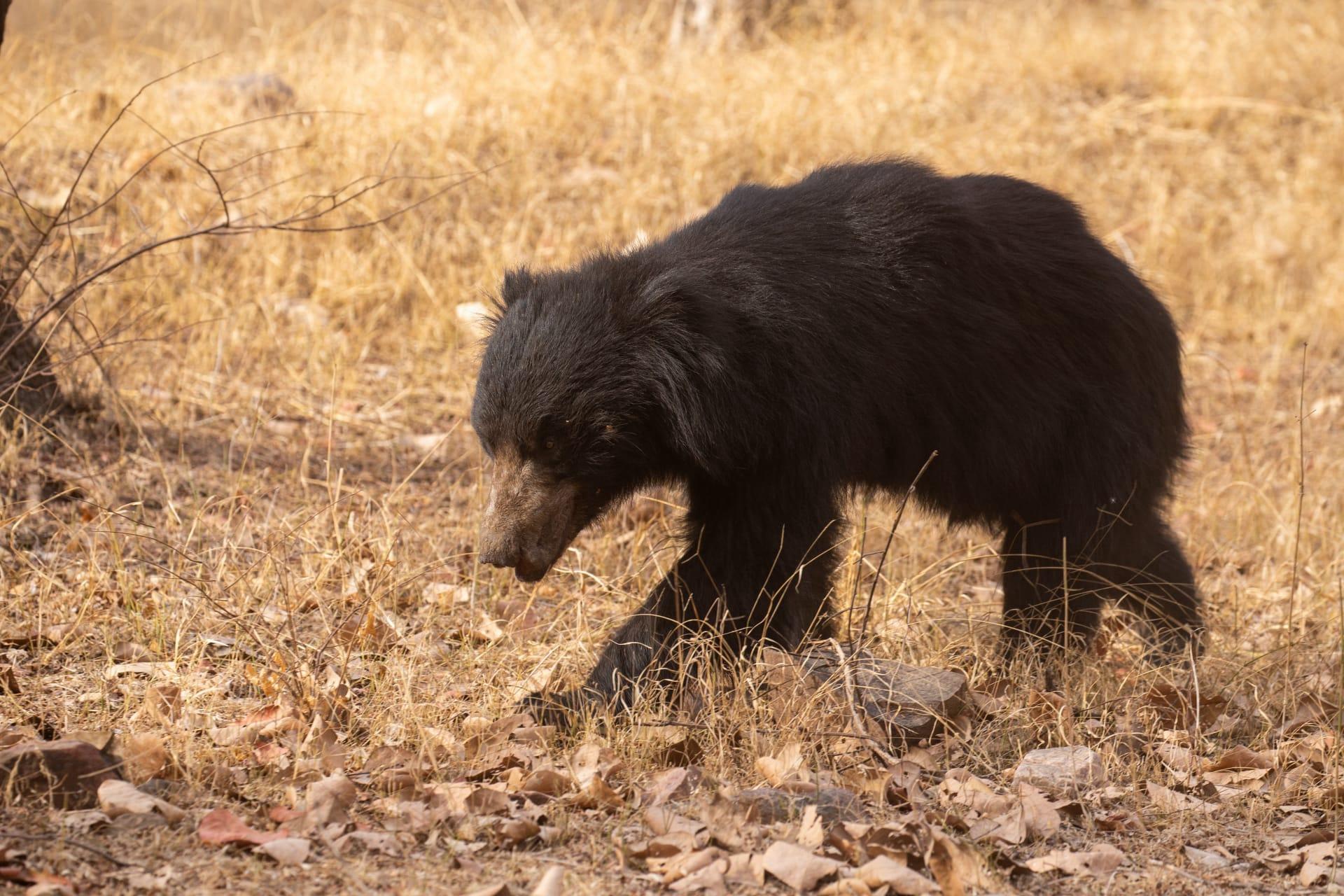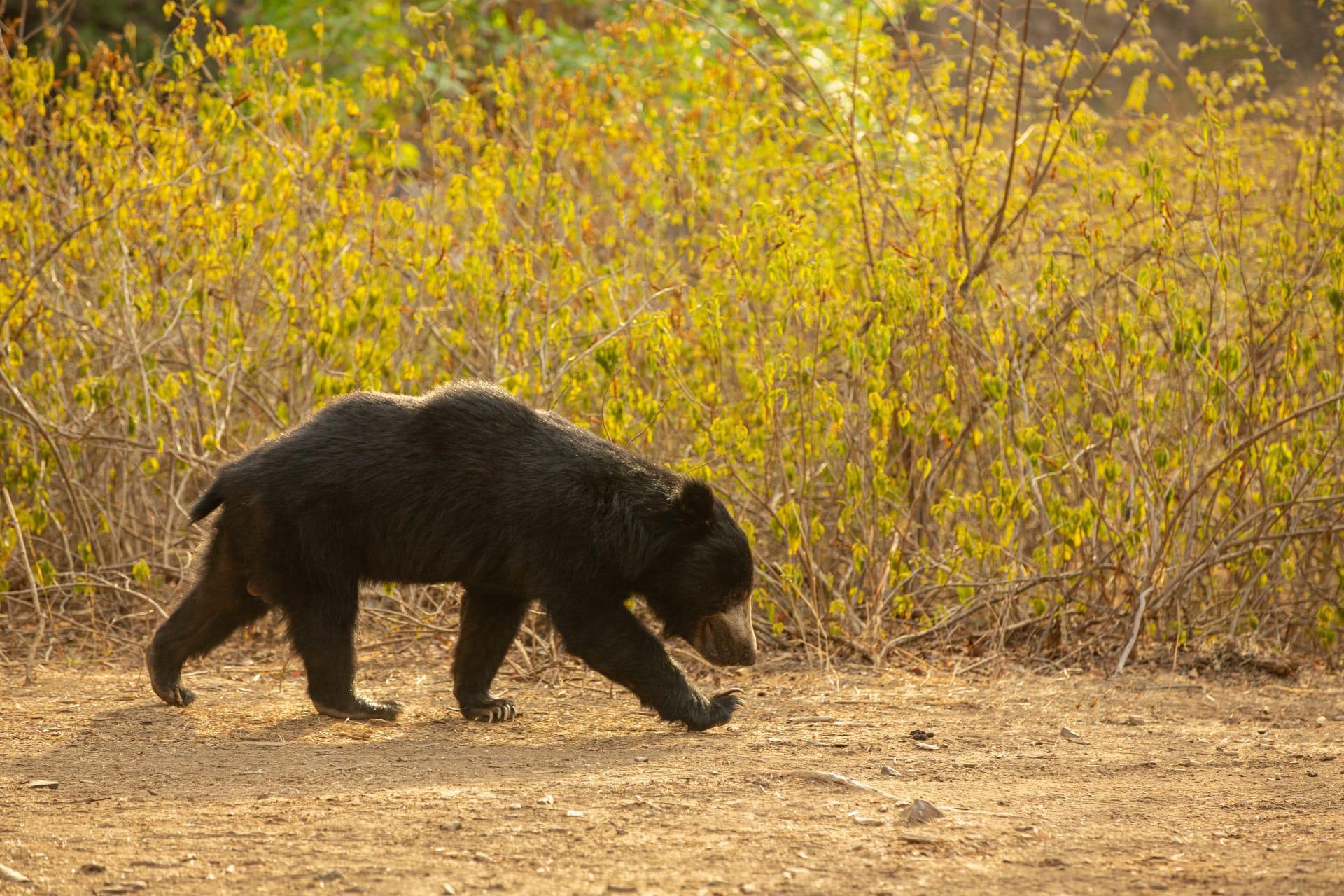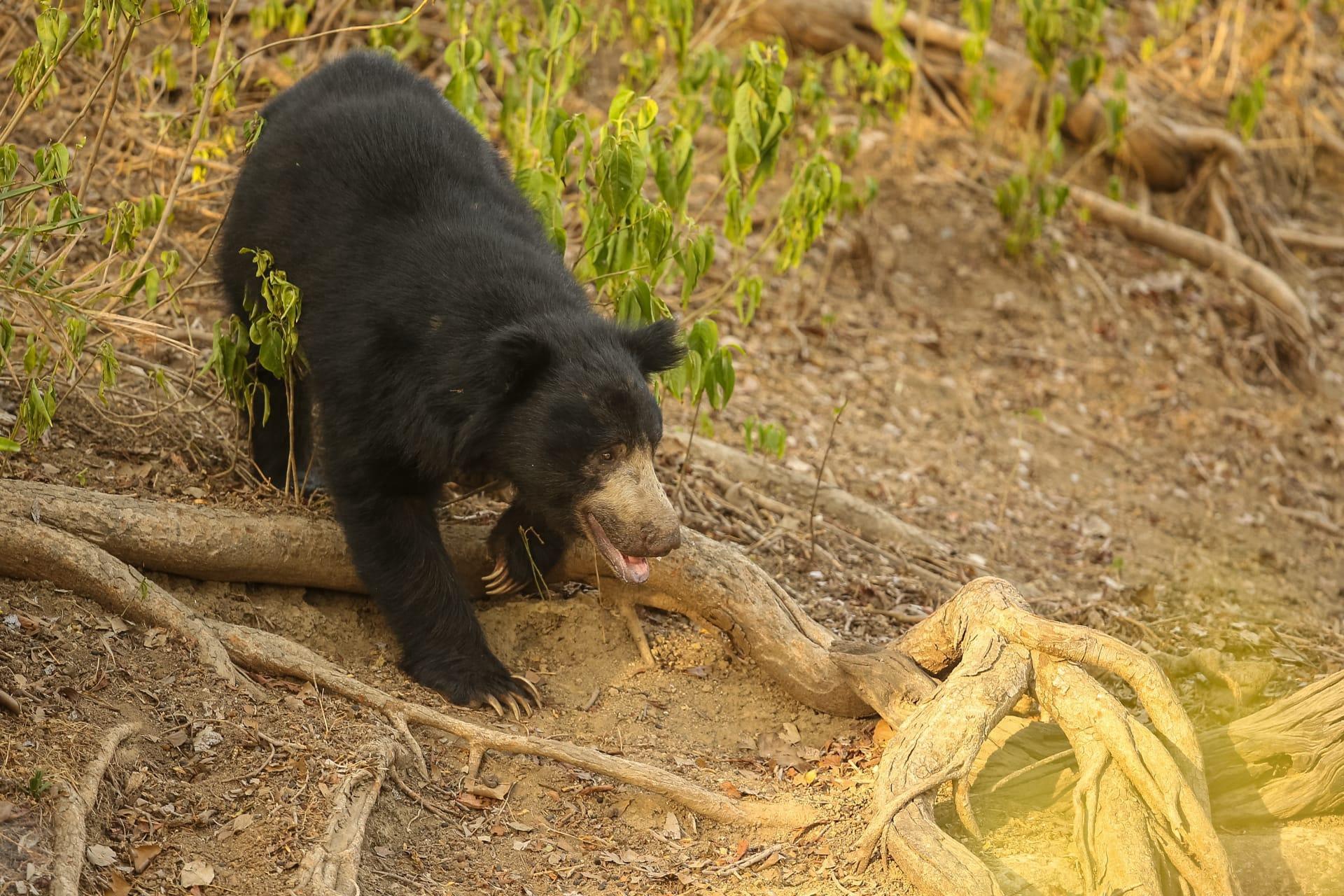Sloth Bear
- Home /
- Mini Encyclopedia /
- Animal /
- Sloth Bear
1
The Sloth Bear, scientifically known as Melursus ursinus, is a nocturnal insectivorous bear species native to the Indian subcontinent. Classified under the family Ursidae, it diverged from ancestral brown bears during the Pleistocene. The species is characterized by its shaggy coat, a mane around the face, and long, sickle-shaped claws. Unique among bears, it has a specially adapted lower lip and palate used for sucking insects. Its coat can range from black to rusty brown, with a distinctive 'V' or 'Y' shaped white or yellow chest patch.
Sloth Bears are predominantly found in India, but their range extends to Nepal, Sri Lanka, and Bhutan. They inhabit a variety of habitats, including tropical and subtropical dry forests, wet forests, and grasslands. The highest densities are found in the dry forests and grasslands of India's central and southern regions. They avoid arid regions and are rarely seen in the high Himalayas. Recent estimates suggest a decline in their population, primarily due to habitat loss and human-wildlife conflict.

2
Question: Do Sloth Bears hang from trees like sloths?
Answer: Contrary to the common misconception, Sloth Bears do not hang from trees like sloths. The name 'Sloth Bear' is a misnomer stemming from early observations of their long claws and shaggy appearance, which superficially resemble a sloth. They are, in fact, agile climbers but do not exhibit the hanging behavior associated with sloths. Sloth Bears use their long claws primarily for digging termite mounds and foraging for insects, fruits, and flowers. They are adept climbers and often climb trees to forage for honeycombs, a favorite delicacy.

3
Sloth Bears have evolved unique survival strategies to thrive in their environment. Their most distinctive feature is their highly specialized mouth structure. They have a gap in their front teeth and a flexible, protruding lower lip, enabling them to suck up insects like a vacuum. Their diet mainly consists of termites and ants, supplemented with fruits, honey, and occasionally small mammals or birds. This insect-based diet is a rarity among bear species.
Another key survival strategy is their nocturnal behavior. Sloth Bears avoid the heat of the day by being active at night, which also helps them evade human disturbances. They have a keen sense of smell, which aids in locating termite mounds and honeycombs. Their shaggy fur provides protection against insect bites and underbrush, while their loud vocalizations and mock charges are used to intimidate predators and protect their cubs.

4
In their ecosystem, Sloth Bears play a crucial role as insectivores and seed dispersers. By feeding on termites and ants, they help control insect populations, which could otherwise become pests. Their foraging behavior, which involves digging and breaking termite mounds, aerates the soil, thus enhancing soil quality and promoting vegetation growth.
Sloth Bears also contribute to the ecosystem as seed dispersers. The fruits they consume pass through their digestive system, and the seeds are excreted in different locations, aiding in plant propagation. This role is vital for maintaining the diversity and health of their habitats. Moreover, as a part of the food chain, they impact the population dynamics of their prey species and are indicators of the ecological health of their environment.

5
Film: "The Secret Life of the Sloth Bear" is a renowned documentary from India, released in 2018. It offers an intimate look into the lives of Sloth Bears in the wild, highlighting their unique behaviors, survival strategies, and challenges. The documentary beautifully captures the interaction between mother bears and their cubs, their nocturnal activities, and the threats they face from habitat loss and poaching.
Book: "Bears of the World" by Lance Craighead, published in the United States in 2000, provides comprehensive insights into various bear species, including the Sloth Bear. It details their habitat, behavior, diet, and conservation status, enriched with scientific data and captivating photographs.
Book: "Wild India: The Wildlife and Scenery of India and Nepal" by Guy Mountfort, published in the United Kingdom in 1997, offers a broader view of India's rich biodiversity. It includes a section on Sloth Bears, providing valuable information about their role in the ecosystem, alongside descriptions of other wildlife in the Indian subcontinent.